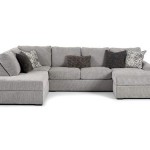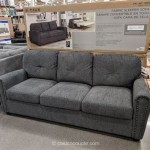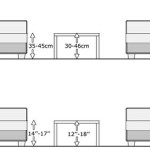How Much Weight Should a Sofa Hold?
Understanding the weight capacity of a sofa is crucial for ensuring both safety and the longevity of the furniture. A sofa that regularly bears more weight than it's designed for can suffer structural damage, leading to premature wear and tear, and potentially creating a safety hazard.
There isn't a universally mandated weight limit for sofas. The capacity varies significantly depending on several factors, including the sofa's construction, materials, size, and intended use. Manufacturers typically establish weight limits based on these factors, though these limits aren't always clearly advertised.
One of the most significant factors influencing weight capacity is the sofa's frame. A frame constructed from hardwood, such as kiln-dried oak or maple, generally offers greater strength and durability compared to frames made from softwood like pine or engineered wood products. Hardwood frames can typically support more weight, making them a better choice for households with multiple users or larger individuals.
The joinery methods employed in the frame construction also play a crucial role. Frames assembled using dowels, corner blocks, and screws tend to be more robust than those relying solely on staples or glue. Interlocking joinery techniques further enhance the frame's stability and weight-bearing capabilities.
The type of suspension system used in a sofa also impacts its weight capacity. Eight-way hand-tied springs are generally considered the gold standard, offering superior support and resilience. Sinuous springs, also known as S-springs, are a common and cost-effective alternative, providing adequate support for most applications. However, they may not be as durable as eight-way hand-tied springs over the long term. Webbing suspension, often used in less expensive sofas, provides the least amount of support and has a lower weight capacity.
Cushion construction and filling materials also contribute to the overall weight a sofa can comfortably support. High-density foam cushions generally offer better support and maintain their shape longer than low-density foam. Down-filled cushions provide a luxurious feel but may not offer the same level of support as foam. Cushions with a combination of foam and down can offer a balance of comfort and support.
The size of the sofa also correlates with its weight capacity. Larger sofas, such as sectionals or oversized sofas, are typically designed to accommodate more people and therefore often have a higher weight capacity than smaller loveseats or chairs. However, it's important to check the manufacturer's specifications, as even large sofas can have limitations.
The intended use of the sofa is another critical factor to consider. A sofa intended for everyday use in a family room will need a higher weight capacity than a sofa intended for occasional use in a formal living room. Similarly, a sofa bed designed for sleeping will need a robust frame and suspension system to support the weight of sleepers.
When researching a sofa purchase, consumers are encouraged to inquire about the weight capacity directly with the retailer or manufacturer. While this information may not always be readily available, a reputable retailer should be able to provide guidance. Looking for indicators of quality construction, such as hardwood frames and robust joinery, can also offer clues about a sofa's potential weight-bearing capacity.
While a specific weight limit might not always be provided, considering the factors discussed above can help consumers make informed decisions and choose a sofa that is appropriate for their needs. Choosing a sofa with adequate weight capacity ensures the safety and comfort of users and prolongs the lifespan of the furniture.
Beyond manufacturer specifications, observing visible signs of stress, such as sagging cushions or a creaking frame, can indicate that a sofa is being overloaded. Addressing these issues promptly, perhaps by limiting usage or reinforcing the frame, can prevent further damage and potential safety hazards.
Maintaining a sofa's structural integrity involves distributing weight evenly across the seating surface. Avoiding concentrated weight in one area, such as consistently sitting in the same spot, helps prevent premature wear and tear on the frame and cushions. Rotating cushions periodically can also help maintain their shape and prolong their lifespan.
Investing in a high-quality sofa with adequate weight capacity is a long-term investment. Understanding the factors that contribute to a sofa's weight-bearing capabilities empowers consumers to make informed decisions and select a piece of furniture that meets their needs and provides years of comfortable and safe use.

How Much Weight Can A Sofa Bed Hold

How Much Weight Can A Sofa Bed Hold

How Much Weight Can A Sofa Bed Hold

5 Heavy Duty Sofas With High Weight Capacity Home Of Cozy

5 Heavy Duty Sofas With High Weight Capacity Home Of Cozy
Your Guide To Measuring Sofa Dfs

5 Heavy Duty Sofas With High Weight Capacity Home Of Cozy

5 Heavy Duty Sofas With High Weight Capacity Home Of Cozy

Expert Advice On Making Your Couch Comfortable Foam

5 Heavy Duty Sofas With High Weight Capacity Home Of Cozy








